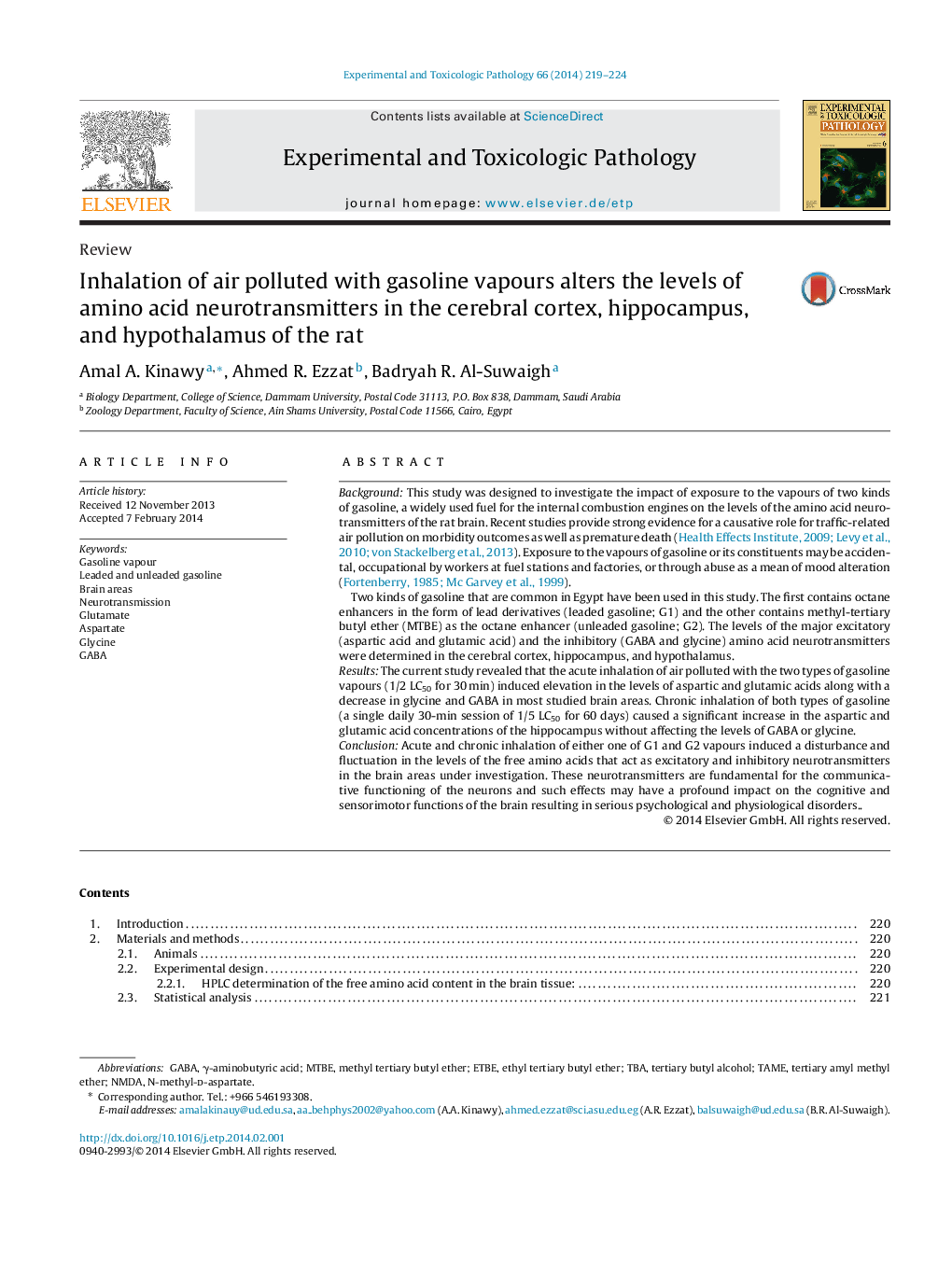| کد مقاله | کد نشریه | سال انتشار | مقاله انگلیسی | نسخه تمام متن |
|---|---|---|---|---|
| 2498828 | 1556836 | 2014 | 6 صفحه PDF | دانلود رایگان |
BackgroundThis study was designed to investigate the impact of exposure to the vapours of two kinds of gasoline, a widely used fuel for the internal combustion engines on the levels of the amino acid neurotransmitters of the rat brain. Recent studies provide strong evidence for a causative role for traffic-related air pollution on morbidity outcomes as well as premature death (Health Effects Institute, 2009, Levy et al., 2010 and von Stackelberg et al., 2013). Exposure to the vapours of gasoline or its constituents may be accidental, occupational by workers at fuel stations and factories, or through abuse as a mean of mood alteration (Fortenberry, 1985 and Mc Garvey et al., 1999).Two kinds of gasoline that are common in Egypt have been used in this study. The first contains octane enhancers in the form of lead derivatives (leaded gasoline; G1) and the other contains methyl-tertiary butyl ether (MTBE) as the octane enhancer (unleaded gasoline; G2). The levels of the major excitatory (aspartic acid and glutamic acid) and the inhibitory (GABA and glycine) amino acid neurotransmitters were determined in the cerebral cortex, hippocampus, and hypothalamus.ResultsThe current study revealed that the acute inhalation of air polluted with the two types of gasoline vapours (1/2 LC50 for 30 min) induced elevation in the levels of aspartic and glutamic acids along with a decrease in glycine and GABA in most studied brain areas. Chronic inhalation of both types of gasoline (a single daily 30-min session of 1/5 LC50 for 60 days) caused a significant increase in the aspartic and glutamic acid concentrations of the hippocampus without affecting the levels of GABA or glycine.ConclusionAcute and chronic inhalation of either one of G1 and G2 vapours induced a disturbance and fluctuation in the levels of the free amino acids that act as excitatory and inhibitory neurotransmitters in the brain areas under investigation. These neurotransmitters are fundamental for the communicative functioning of the neurons and such effects may have a profound impact on the cognitive and sensorimotor functions of the brain resulting in serious psychological and physiological disorders..
Journal: Experimental and Toxicologic Pathology - Volume 66, Issues 5–6, August 2014, Pages 219–224
